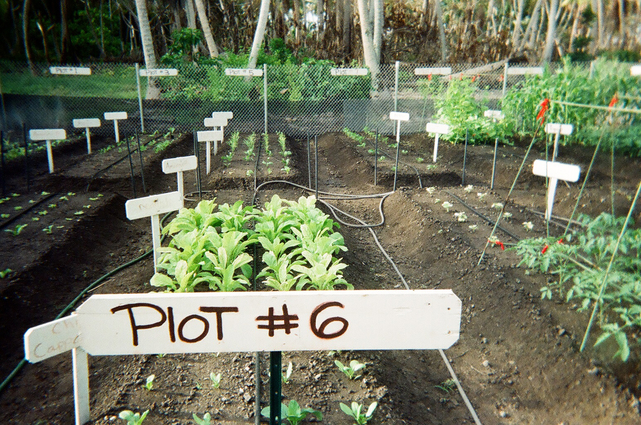Lawrence Livermore partners with Native American carbon researchers to help support Marshallese resettlement
 (Download Image)
Lawrence Livermore National Laboratory has established a small garden project on Rongelap Island in conjunction with the Rongelap Atoll local government. The basic aim of the garden project is to assess the uptake of nuclear fallout radionuclides such as cesium-137 and strontium-90 into non-traditional locally grown foods such as leafy green vegetables.
(Download Image)
Lawrence Livermore National Laboratory has established a small garden project on Rongelap Island in conjunction with the Rongelap Atoll local government. The basic aim of the garden project is to assess the uptake of nuclear fallout radionuclides such as cesium-137 and strontium-90 into non-traditional locally grown foods such as leafy green vegetables.
After World War II, the United States conducted 66 nuclear detonations between 1946 and 1958, on once-pristine inhabited atolls of Bikini and Enewetak in the northern Marshall Islands. The detonations contaminated the islands with radioactive fallout. Long-lived radionuclides such as radiocesium remain at different levels in indigenous terrestrial plants that may be used as food.
To help reduce levels of radiation exposure and support ongoing efforts by Marshall Islanders to resettle their ancestral homelands, the contaminated coral soils need to be remediated as a best practice under the general principles of ALARA -- As Low As Reasonably Achievable.
"Terra Mulata, an ancient indigenous Amazon Black Earth technology, will be investigated at Lawrence Livermore and on the atolls this year," said Dan Hawk, a climate change expert, and lead researcher within the American Indian team. "Our team expects carbon, the main ingredient of Terra Mulata, to significantly improve plant productivity as well as water/nutrient retention of coral soils, and potentially help decrease radiocesium uptake in plants."
Together with existing recommendations on remediation of radiocesium uptake into tree-crop products such as coconut, this work may provide an alternative method to using large amounts of chemical fertilizers as opposed to a one-time application of Cpryo, especially for use in home vegetable gardens, said Terry Hamilton, head of LLNL's Marshall Island Program.
"We envision that this work will ultimately support food security and economic development of island communities, and provide added assurances on radiation safety and health," Hawk said. "We hope these efforts will help bring about dietary change to combat rampant indigenous diabetes; as the Marshall Islands has one of the highest rates of diabetes in the world."
Contact
Anne M Stark[email protected]
925-422-9799
Related Links
LLNL research at Marshall Islands could lead to resettlement,
Return to Rongelap
Republic of the Marshall Islands
U.S. Department of State, Background Note: Marshall Islands
Tags
Physical and Life SciencesFeatured Articles







